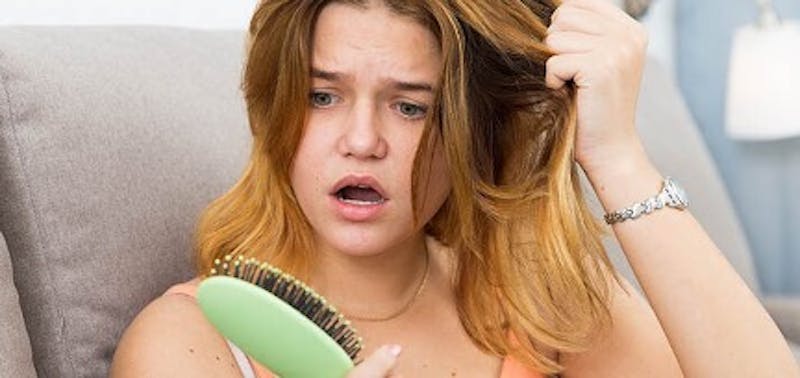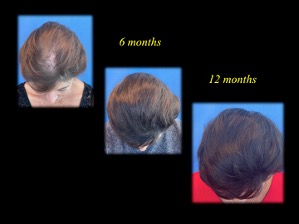
Not all hair loss is the same — and treating it isn’t one-size-fits-all. In regenerative hair therapy, distinguishing between shedding and true thinning is critical because each condition responds to different interventions.
Many patients walk into a clinic saying, “My hair is falling out — I’m going bald!” But often, they’re experiencing shedding, not thinning — and that requires a completely different protocol than genetic miniaturization.
Let’s break it down in a way that aligns with today’s most advanced regenerative treatments.
What Is Hair Shedding? (Telogen Effluvium)
Shedding occurs when a higher-than-normal number of follicles enter the telogen (resting) phase at the same time. The follicle is still alive — it’s just temporarily paused.
Key characteristics of shedding:
- Sudden increase in hair fall
- Happens 6–12 weeks after a trigger
- Hair density typically returns once the trigger is removed
Common Triggers Seen in Clinic:
- Physical or emotional stress: Shifts large % of follicles into telogen
- Illness, fever, anesthesia, surgery: Body prioritizes healing over hair growth
- Postpartum hormone drop: Cycle reset after birth
- Crash dieting or nutrient deficiency: Reduced fuel for follicles
- Medication changes: Temporary shock to growth cycle
- COVID-related shedding: Post-viral inflammatory response
Good news: Shedding is usually reversible because the follicle stem cells are intact.
What Is Thinning Hair? (Follicle Miniaturization)
Thinning is not about how many hairs are falling out — it’s about what grows back.
Thinning occurs when follicles shrink (miniaturize) due to hormonal, inflammatory, or aging-related changes. If not corrected, the follicle eventually stops producing visible hair.
Signs of true thinning:
- Hair density and volume decreasing over time
- Widening part line or visible scalp
- Receding hairline or temple loss
- Smaller ponytail circumference
- Hair strands feel finer, weaker, or more fragile
Why Distinguishing Them Matters for Treatment
If you treat shedding with aggressive DHT-blocking or invasive therapies, you may stress the follicle further.
If you treat thinning like temporary shedding, you lose critical time — because miniaturization progresses every cycle.
Regenerative Hair Medicine
Regenerative Treatment Strategies
For Shedding (Cycle Reset + Follicle Support)
- Nutritional + micronutrient restoration (Ferritin, Vitamin D, Zinc, B-complex)
- Scalp oxygenation therapy to boost ATP and mitochondrial recovery
- Low-level light therapy (LLLT / red light)
- Peptide-based topicals (e.g., GHK-Cu, biomimetic peptides)
- Mild growth-factor or exosome support when needed (micro-dosed vs. high-concentration)
For Thinning (Regenerative Follicle Rescue & Rebuild)
- Exosome-rich biologics or MSC-derived growth factor treatments
- CRP with Protein fibrin scaffolding for improved retention
- Microneedling + bioactive serums to induce Wnt/VEGF signaling
- Mitochondrial and vascular stimulation (oxygen therapy + red light + microvascular boosters)
- Collagen remodeling around the follicle to reverse perifollicular fibrosis
- Hormonal pathway balancing (for androgen-related thinning)
Fig 1, Combination Regenerative and Medical intervention 6 months then 1 year 2 treatments.

Bottom Line for Patients
- Shedding = your hair is falling out now, but follicles can fully recover.
- Thinning = your follicles are shrinking over time — and early regenerative therapy is essential to preserve them.
If you’re noticing excess shedding, don’t panic — but if your density or volume is decreasing, that’s your sign to intervene early while we can still rescue the follicle.
